10 start with H start with H
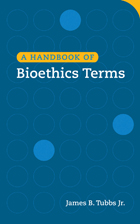
The term bioethics was first used in the early 1970s by biologists who were concerned about ethical implications of genetic and ecological interventions, but was soon applied to all aspects of biomedical ethics, including health care delivery, research, and public policy. Its literature draws from disciplines as varied as clinical medicine and nursing, scientific research, theology and philosophy, law, and the social sciences—each with its own distinctive vocabulary and expressions.
A Handbook of Bioethics Terms is a handy and concise glossary-style reference featuring over 400 entries on the significant terms, expressions, titles, and court cases that are most important to the field. Most entries are cross-referenced, making this handbook a valuable addition to the bookshelves of undergraduate and graduate students in health care ethics, physicians and nurses, members of institutional ethics committees and review boards, and others interested in bioethics.
A sampling of terms from the handbook: AbortionDNR (Do Not Resuscitate)Eugenics Gene therapy Living will Natural lawPrimum non nocere Single-payer systemSurrogate consent Schiavo case
Sample Definitions:
Formalism: In ethical theory, a type of deontology in which an action is judged to be right if it is in accord with a moral rule, and wrong if it violates a moral rule.
Xenograft: Organ or tissue transplanted from one individual to another individual of another species. (See Transplantation, organ and tissue)
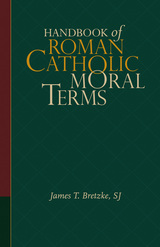
The Handbook of Roman Catholic Moral Terms contains more than 800 moral terms, offering concise definitions, historical context, and illustrations of how these terms are used in the Catholic tradition, including Church teaching and documents.
James T. Bretzke, SJ, places Catholic tradition in a contemporary context in order to illuminate the continuities as well as discontinuities of Church teaching and key directions of Catholic thought. The author also provides extensive cross-referencing and bibliographic suggestions for further research.
Designed to serve as a vital reference work for libraries, students and scholars of theology, priests and pastoral ministers, as well as all adults interested in theological enrichment or continuing education, the Handbook of Roman Catholic Moral Terms is the most comprehensive post–Vatican II work of its kind available in English.

An incomparable guide to the thousands of characters, from humble artisan to lofty genius, who people the unfolding history of music, this volume brings together all the pertinent biographical information about composers, performers, music theorists, and instrument makers from the days of praise chants to the bop and pop of today. A long-awaited companion to The Harvard Dictionary of Music, and compiled with the same meticulous scholarship and delight in detail, this biographical dictionary emphasizes classical and art music, but also gives ample attention to jazz and blues, rock and pop, and hymns and show tunes across the ages—with unusual care devoted to coverage of the twentieth century.
That the Belgian composer Jean Absil was professor of fugue at the Brussels Conservatory is a little-known fact. And few are aware that Roy Acuff began his country-and-western career in medicine shows. The writings of the seventeenth-century organist Jakob Adlung may be obscure, while Theodor Adorno’s are widely read and studied. But they can all be found in the As, along with 218 more entries, from Herb Alpert and the Andrews Sisters to Carl Friedrich Abel and Emanuel Ax. And this is only the beginning.
Here then is the information you need about 5,500 figures in the world of music—the major, the minor, the famous, the nearly forgotten, from Bach and Beethoven to Irving Berlin, Benny Goodman, and Bruce Springsteen—capsule summaries of the lives and careers behind the music enjoyed in every era. The volume is enlivened with illustrations, some revelations in themselves. A compendium that no music lover should be without, this rich volume, along with The Harvard Dictionary of Music, constitutes the standard reference work for the musically inclined, the curious, the informed, and the expert.
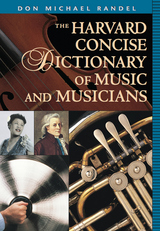
This new compact guide to the history and performance of music is both authoritative and a pleasure to use. With entries drawn and condensed from the widely acclaimed The New Harvard Dictionary of Music and its companion The Harvard Biographical Dictionary of Music, it is a dependable reference for home and classroom and for professional and amateur musicians.
This concise dictionary offers definitions of musical terms; succinct characterizations of the various forms of musical composition; entries that identify individual operas, oratorios, symphonic poems, and other works; illustrated descriptions of instruments; and capsule summaries of the lives and careers of composers, performers, and theorists. Like its distinguished parent volumes, The Harvard Concise Dictionary of Music and Musicians provides information on all periods in music history, with particularly comprehensive coverage of the twentieth century.
Clearly written and based on vast expertise, The Harvard Concise Dictionary of Music and Musicians is an invaluable handbook for everyone who cares about music.
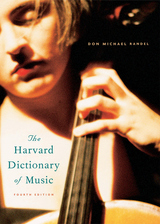
This classic reference work, the best one-volume music dictionary available, has been brought completely up to date in this new edition. Combining authoritative scholarship and lucid, lively prose, the Fourth Edition of The Harvard Dictionary of Music is the essential guide for musicians, students, and everyone who appreciates music.
The Harvard Dictionary of Music has long been admired for its wide range as well as its reliability. This treasure trove includes entries on all the styles and forms in Western music; comprehensive articles on the music of Africa, Asia, Latin America, and the Near East; descriptions of instruments enriched by historical background; and articles that reflect today’s beat, including popular music, jazz, and rock. Throughout this Fourth Edition, existing articles have been fine-tuned and new entries added so that the dictionary fully reflects current music scholarship and recent developments in musical culture.
Encyclopedia-length articles by notable experts alternate with short entries for quick reference, including definitions and identifications of works and instruments. More than 220 drawings and 250 musical examples enhance the text. This is an invaluable book that no music lover can afford to be without.

A classic and invaluable reference work. Soon after its initial publication, the Harvard Dictionary of Music by Willi Apel was firmly established as a standard and essential resource for everyone concerned with music. The product of exceptional scholarship, it was praised as being comprehensive, concise, authoritative, scholarly, and enjoyable. Leopold Stokowski wrote, “I so often consult your dictionary of music, and with such never failing enlightenment, that I must offer you my thanks for your unique book, so profound and so broad in scope… The vast scholarship…is of immeasurable value to the whole world of music.”
For this second edition the dictionary has been thoroughly revised, updated, and substantially enlarged. Apel and eighty-eight other eminent music scholars have contributed new articles and revised old ones completely. The already comprehensive list of accurate definitions has grown measurably and it now even includes nothus, pyiba, and merengue.
In the greatly expanded coverage of ethnomusicology, cumbia—an Afro-Panamanian dance form—and Vietnam are only two of the new entries. Additionally, all the general information about individual countries has been revised and the discussion of both theory and history has been amply increased. Developments of the last two decades are given special attention with particular emphasis on compositional techniques, including electronic music and serial music. Individual compositions, representative of every type from every era, are described. The bibliography following each article, a unique feature of the first edition, has been updated and expanded. There are fifty percent more illustrations than in the first edition, including explicit drawings of instruments, clear music examples, diagrams, charts and a full-page outline of the history of music.
An extensive list of the most important music libraries and collections throughout the world with summaries of their significant musical holdings is a valuable part of the dictionary. The section on historical editions now lists fifty-three collections of music and briefly describes each volume within each collection.
The Harvard Dictionary of Music, Second Edition, Revised and Enlarged, is the result of imaginative, specialized, modern, and reliable music scholarship. Containing nearly 1,000 pages of precise and accessible information on all musical subjects, it offers over fifty percent more material than the first edition. It is essential not only to the scholar of music, the professional performer, and the practicing amateur, but to everyone who has ever anticipated the pleasure of a weekly musical broadcast, purchased a favorite recording, or truly enjoyed a concert.

From Acadians to Zoroastrians-Asians, American Indians, East Indians, West Indians, Europeans, Latin Americans, Afro-Americans, and Mexican Americans—the Harvard Encyclopedia of American Ethnic Groups provides the first comprehensive and systematic review of the many peoples of this country. It should excite all Americans about their nation.
Informative and entertaining, this volume is an indispensable reference work for home, library and office. It establishes a foundation for the burgeoning field of ethnic studies; it will satisfy and stimulate the popular interest in ancestry and heritage. It is a guide to the history, culture, and distinctive characteristics of the more than 100 ethnic groups who live in the United States.
Each ethnic group is described in detail. The origins, history and present situation of the familiar as well as the virtually unknown are presented succinctly and objectively. Not only the immigrants and refugees who came voluntarily but also those already in the New World when the first Europeans arrived, those whose ancestors came involuntarily as slaves, and those who became part of the American population as a result of conquest or purchase and subsequent annexation figure in these pages. The English and the Estonians, the Germans and the Gypsies, the Swedes and the Serbs are interestingly juxtaposed. Even entries about relatively well-known groups offer new material and fresh interpretations. The articles on less well-known groups are the product of intensive research in primary sources; many provide the first scholarly discussion to appear in English. One hundred and twenty American and European contributors have been involved in this effort, writing either on individual groups or on broad themes relating to many.
The group entries are at the heart of the book, but it contains, in addition, a series of thematic essays that illuminate the key facets of ethnicity. Some of these are comparative; some philosophical; some historical; others focus on current policy issues or relate ethnicity to major subjects such as education, religion, and literature. American identity and Americanization, immigration policy and experience, and prejudice and discrimination in U.S. history are discussed at length. Several essays probe the complex interplay between assimilation and pluralism—perhaps the central theme in American history—and the complications of race and religion.
Numerous cross-references and brief identifications will aid the reader with unfamiliar terms and alternative group names. Eighty-seven maps, especially commissioned, show where different groups have originated. Annotated bibliographies contain suggestions for further reading and research. Appendix I, on methods of estimating the size of groups, leads the reader through a maze of conflicting statistics. Appendix II reproduces, in facsimile, hard-to-locate census and immigration materials, beginning with the first published report on the nativities of the population in 1850.
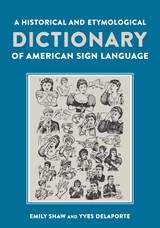
Through rigorous study of historical texts, field research in communities throughout France and the U.S., and an in-depth analysis of the cultural groups responsible for the lexicon, authors Emily Shaw and Yves Delaporte present a compelling and detailed account of the origins of over 500 ASL signs, including regional variations. Organized alphabetically by equivalent English glosses, each sign is accompanied by a succinct description of its origin and an LSF sign where appropriate. Featuring an introductory chapter on the history of the development of ASL and the etymological methodology used by the authors, this reference resource breaks new ground in the study of America’s sign language.
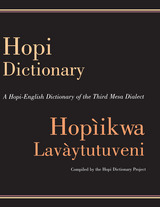
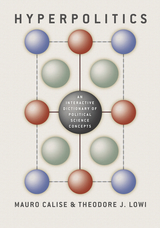
Fifteen years in the making, Hyperpolitics is an interactive dictionary offering a wholly original approach for understanding and working with the most central concepts in political science. Designed and authored by two of the discipline’s most distinguished scholars, its purpose is to provide its readers with fresh critical insights about what informs these political concepts, as well as a method by which readers—and especially students—can unpack and reconstruct them on their own.
International in scope, Hyperpolitics draws upon a global vocabulary in order to turn complex ideas into an innovative teaching aid. Its companion open access website (www.hyperpolitics.net) has already been widely acknowledged in the fields of education and political science and will continue to serve as a formidable hub for the book’s audience. Much more than a dictionary and enhanced by dynamic graphics, Hyperpolitics introduces an ingenious means of understanding complicated concepts that will be an invaluable tool for scholars and students alike.
READERS
Browse our collection.
PUBLISHERS
See BiblioVault's publisher services.
STUDENT SERVICES
Files for college accessibility offices.
UChicago Accessibility Resources
home | accessibility | search | about | contact us
BiblioVault ® 2001 - 2024
The University of Chicago Press









